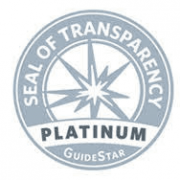 Spent the day sorting out the confiscated lines from the last two patrols – three lines in total, hundreds of yards of the stuff. The hooks and gacillas – metal devices used to extend lines (I don’t know what they’re called in English) – are separated out from the thin, translucent fishing line. Once the line is clean of all gear, it is stuffed into canvas sacks. A full sack is about the size of a hay bale, and two days worth of patrols converted into four of these sacks, each weighing in at 40-45 pounds apiece (that’s a rough estimate). The hooks and gacillas are sorted as well ( A harrowing task – the hooks are nastily sharp, and camouflage well when mixed in with the gacillas). Any sort of line attached to the eyehole of these devices is cut away, and then the gear is tossed into its respective bucket.
Spent the day sorting out the confiscated lines from the last two patrols – three lines in total, hundreds of yards of the stuff. The hooks and gacillas – metal devices used to extend lines (I don’t know what they’re called in English) – are separated out from the thin, translucent fishing line. Once the line is clean of all gear, it is stuffed into canvas sacks. A full sack is about the size of a hay bale, and two days worth of patrols converted into four of these sacks, each weighing in at 40-45 pounds apiece (that’s a rough estimate). The hooks and gacillas are sorted as well ( A harrowing task – the hooks are nastily sharp, and camouflage well when mixed in with the gacillas). Any sort of line attached to the eyehole of these devices is cut away, and then the gear is tossed into its respective bucket.
 All of this gear is stored in an enormous shed down by the river, amidst the “lower compound” of the Wafer Bay Station. The shed is probably 15 feet by 20 feet, and at least 15 feet high. Over half of it is taken up with an enormous mound of the hay-bale sized sacks, piled literally to the ceiling (My camera is being dysfunctional at the moment, but soon enough I will have pictures up). Literally dozens of sacks worth of confiscated lines. What space is not taken up by the line is filled with plastic, 50-gallon oil drums, overflowing with hooks and gacillas. Several of these barrels remain unsorted, so that will be my task for the next several days, along with a couple of other volunteers.
All of this gear is stored in an enormous shed down by the river, amidst the “lower compound” of the Wafer Bay Station. The shed is probably 15 feet by 20 feet, and at least 15 feet high. Over half of it is taken up with an enormous mound of the hay-bale sized sacks, piled literally to the ceiling (My camera is being dysfunctional at the moment, but soon enough I will have pictures up). Literally dozens of sacks worth of confiscated lines. What space is not taken up by the line is filled with plastic, 50-gallon oil drums, overflowing with hooks and gacillas. Several of these barrels remain unsorted, so that will be my task for the next several days, along with a couple of other volunteers.Several things strike me as odd about this process, and I’m not sure what to make of them. Nothing for now, since I’ve only been here for two weeks, but definitely some things I will be thinking about:
- Patrols have been occurring the entire time I’ve been here (14 days), but only in the last two days has anything been recovered. Is this irregular timetable normal?
- Why are there two whole barrels of unsorted fishing gear? As a volunteer, this is the sort of work I’d been expecting to do. Though I’m happy to act as a landscaper during my time here, I feel that managing the flow of confiscated fishing equipment should be more of a priority than raking the leaves around the pavilion.
Two expand on #2 slightly. All of the confiscated material seems to just sit there. Maybe sorting the equipment does not take priority because there is no next step. Its a distinct possibility that piles just sit there, in which case, what’s the rush? But leaving all of that raw material to simply rot is a waste. I see an opportunity to recycle the plastic line (grind it into pellets, re-use it!) and the hooks and gacillas (that metal is a valuable resource).
I understand that the last thing the rangers want is for the equipment to fall back into the hands of the fisherman. Follow that train of thought, and one can imagine that sending the equipment back to the continent is pretty risky, given the corruption in the Costa Rican government. How easy it would be to just sell the hooks and gastillas right back to the fishermen for a little personal profit! No, no, better to keep it all here out of the hand of bureaucrats and fishermen alike. But the sack pile will just get bigger, and more barrels will overflow.
It’s also a possibility that the funcionarios keep all of the confiscated gear here as evidence of illegal activity. But it seems to me that a written record and photo documentation should be able to accomplish the same thing. And again, if legal action were to be taken against the fishermen, the court would want the evidence on the mainland. But based on my limited knowledge of Costa Rican law, I believe any confiscated equipment must be turned into to the courts in San Jose within 24 hours of being confiscated if it is to be used as evidence, and the pile has been sitting here for two weeks now. So legally, its useless.
But before I get too carried away, I need to know more. And since I’ll be sitting in the shop, separating fishing hooks from gastillas for the next couple of days, I will have plenty of time to get some answers.




